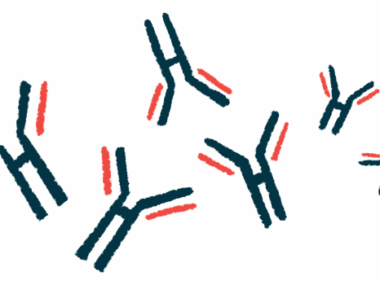Alpha-synuclein clumps contribute to Fabry kidney cell damage: Study
Reducing protein buildup can reverse cell damage, revealing potential treatment options
Written by |

In Fabry disease, a protein called alpha-synuclein forms clumps inside kidney cells, a toxic buildup that isn’t reversed by conventional treatments.
Reducing that buildup can reverse cell damage, opening potential avenues for new treatment strategies, according to “Synuclein [alpha] accumulation mediates podocyte injury in Fabry nephropathy,” which was published in The Journal of Clinical Investigation.
Fabry disease is caused by mutations in the gene GLA, which provides instructions for making an enzyme, alpha-galactosidase A (Gal A), that helps break down certain fatty molecules, particularly Gb3. Without a working version of Gal A, these fatty molecules build up to toxic levels in cells. This is thought to lead to disease symptoms, though the exact molecular mechanisms remain incompletely understood.
Enzyme replacement therapies, or ERTs, administer a working version of Gal A to cells and can reduce the toxic buildup of Gb3. It’s not clear whether they can reverse the cellular damage from Fabry disease, however, leading scientists to analyze kidney biopsy samples from patients with Fabry disease, focusing on a type of kidney cell called podocytes.
Alpha-synuclein protein in Fabry disease
In untreated Fabry, podocytes showed the toxic Gb3 buildup along with signs of cellular damage. In biopsies from patients on ERT, Gb3 levels were reduced, but there was no clear reduction in other signs of cellular damage.
Using gene editing techniques, the researchers created a GLA-deficient podocyte cell line. In line with the biopsy findings, these cells exhibited Gb3 accumulation and signs of damage, including enlargement of lysosomes (the cellular “recycling centers” where Gal A is normally active). ERT treatment partially reversed the abnormal increase in lysosomal number and size, but didn’t modify oxidative stress — when toxic molecules called reactive oxygen species outweigh the body’s antioxidant defenses.
The researchers conducted a series of transcriptomic and proteomic analyses — experiments that assess the overall activity of genes and proteins — in the cells to understand the reason for these findings and zeroed in on alpha-synuclein, which was present at levels above normal in cells carrying the GLA mutation.
The alpha-synuclein protein is prone to forming toxic clumps in cells that can contribute to disease in other contexts. Clumps of this protein in the brain are a hallmark of Parkinson’s disease.
Experiments showed increased alpha-synuclein in the Fabry disease kidney cells. ERT with a version of the Gal A enzyme had no apparent effect on its accumulation, however. When the researchers used genetic engineering techniques to reduce its levels, a decrease in markers of lysosome damage resulted, unlike what was seen with ERT.
Using the transcriptomic and proteomic data, the researchers next looked for potential treatments that might reduce alpha-synuclein. Orciprenaline (also known as metaproterenol), approved to treat asthma, was found to be a likely candidate and further testing showed it reduced clumping and improved lysosome health in podocytes. Another compound related to orciprenaline called clenbuterol showed a more pronounced effect on podocyte health when combined with ERT.
These medications (and other drugs in the same class) are unlikely to be a good fit for Fabry disease treatment because abnormal heart rhythms, which can be dangerous for Fabry patients with heart disease, are a common side effect, the researchers said. Still, the findings could serve as a useful proof-of-concept for targeting alpha-synuclein to reduce damage in Fabry disease.
“The complementation [of standard ERT] with novel pathway targeted therapeutic strategies will have the potential to significantly improve long-term outcomes of our patients,” they wrote.






